-
The health benefits of wine

When I talk about the health benefits of wine drinking, I’m referring to very moderate consumption (five to seven glasses a week), accompanied by food. I’m afraid that necking the whole bottle on a empty stomach, while it might be fun at the time, does not count as healthy consumption!
There have been numerous studies conducted on the health benefits of wine, especially red wine. Without exception, the findings all suggest that it promotes a longer life, aids digestion, improves mental health, acts as an anti-inflammatory, protects the heart and even protects against certain cancers. Finally, the benefits gained from the pleasure of drinking a glass of good wine gives should not be underrated.
Hippocrates, the father of western medicine, was a big wine advocate, claiming it was something of a panacea. He used it for disinfecting wounds, diluting medication to increase palatability, alleviating pain during childbirth, symptoms of diarrhoea and even lethargy.
The anti-aging properties of wine have been apparent for over a thousand years. Monasteries were convinced that their monks’ long lifespans was due at least partly to their moderate, regular consumption of wine. Their conviction was later confirmed by The Copenhagen Heart Study carried out in 1994/95.
Wine provides valuable vitamins, minerals and phytonutrients, but probably its main health benefits are due to its high resveratrol content. Red wine contains more resveratrol than white because it is fermented with the skins (white wine is not). Certain plants produce resveratrol to fight off bacteria and fungi and shield from ultraviolet irradiation.
A recent Spanish study found that wine, particularly red wine, reduces the risk of depression. It showed that people drinking between two and seven glasses of wine per week were less likely to be diagnosed with depression, even after factoring in lifestyle. Another study carried out at the University of Leicester reported that regular, moderate red wine consumption could reduce the rate of bowel tumours by about 50%.
It is accepted that alcohol consumption generally increases the risk of breast cancer. However, a study conducted at Cedars-Sinai Medical Centre in Los Angeles found that wine intake has the opposite effect. The chemicals in the skins and seeds of red grapes reduce oestrogen levels while raising testosterone which results in a lower risk of developing breast cancer.
Another study found that moderate red wine intake can reduce the risk of developing dementia. The study which was conducted in 19 countries showed a significantly lower dementia risk amongst regular wine drinkers. It would appear that resveratrol reduces the stickiness of blood platelets, which helps keep the blood vessels open and flexible, which in turn helps maintain a good blood supply to the brain. The study concluded that moderate red wine drinkers had a 23% lower risk of developing dementia.
Red wine shields against severe sunburn, by virtue of its flavonoid content. It also protects the eyesight by controlling the overgrowth of blood vessels in the eye, a problem in both diabetic retinopathy and age-related macular degeneration. Drinking wine also boosts levels of omega-3 fatty acids in the body and it would appear that resveratrol improves sensitivity to insulin. Insulin resistance is the most important critical factor contributing to type 2 diabetes risk.
Perhaps most surprisingly, modest wine consumption is good for liver disease. A study showed that it reduced the risk of non-alcoholic fatty liver disease by half compared to people who never drank wine.
If you’re interested in finding out more about this ‘superdrink’, there is a very complete and interesting book, written by Frenchman, Michel Montignac called The Miracle of Wine.
Santé! -
New potato oven raclette and a dog at the end of his tether
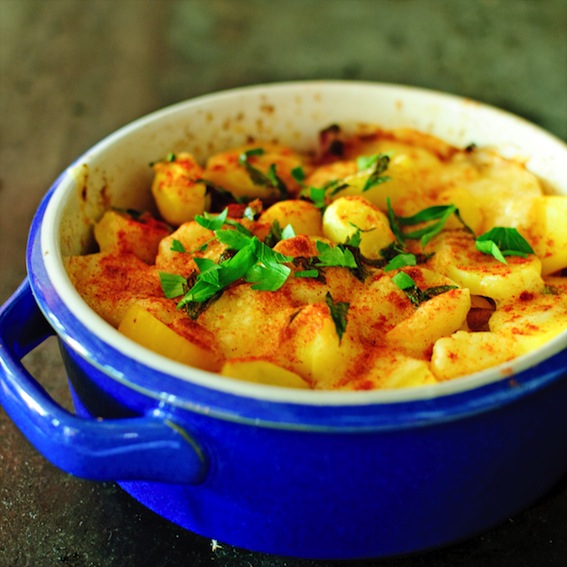

My patience has reached its limits, especially when it comes to pests with wings. I thought we’d seen the back of the tweeting squatter after I had explained (with my teeth showing) that she had delighted us long enough with her presence. I think that my natural assertiveness must be very intimidating because she flew off that very evening. I thought that was that; alas I was mistaken. She comes back at least once or twice every single day for a bellyful of couscous and special dove grains and a snooze. How can she possibly be so hungry and so tired? It’s not as if she has a proper job like me. What annoys me most is how pleased they always are to see her. She fascinates them so much (why?) that they sometimes forget to give me my camembert after lunch, which makes me feel unloved. And as if all this isn’t irritating and hurtful enough, a large bird with a long neck has also turned up. It’s called a heron apparently and thank goodness it doesn’t come into the house because it’s very big indeed. All in all, I’ve had it up to the back of my impressive canines with anything that flaps or chirps. This raclette dish isn’t my favourite, although they seemed to love it for some reason. The upside, however, is that it contains cheese, which is not at all good for birds, so that can only be a good thing.
Ingredients (serves 4)
225g new potatoes, cooked
1 tablespoon olive oil
100g raclette cheese, grated (although any hard cheese will work)
1 medium-sized onion, finely sliced
4 slices Bayonne ham, roughly cut into strips (or Parma ham)
Sea salt, freshly-ground black pepper
1 teaspoon paprika
4 or 5 leaves of fresh basil to garnish
Preheat the oven to 180°C. Prepare a medium-sized oven-proof dish by greasing with olive oil. Slice the potatoes into pieces roughly 3mm thick and create a layer on the bottom of the dish, sprinkle with cheese, add a few strips of ham and onion and continue layering until everything is used up. Make sure to save a bit of cheese to sprinkle on top along with the seasoning. Cook for 40 minutes, garnish with the basil leaves and serve with crisp green salad. And don’t listen to Hugo – it’s divine!
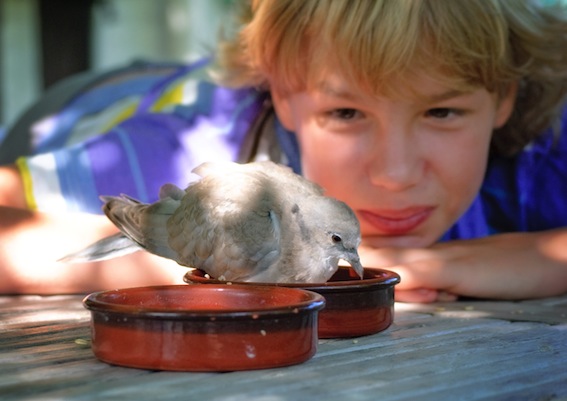
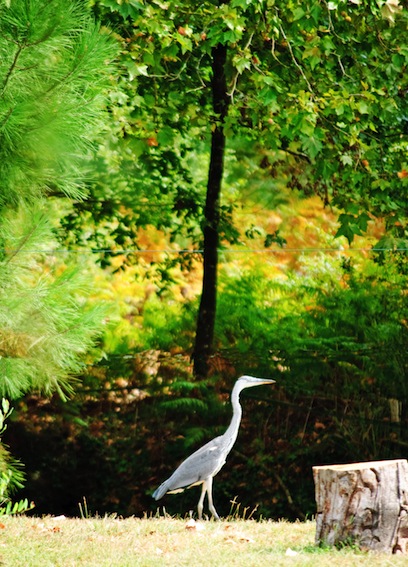
-
Apple, cinnamon and honey clafouti and mud therapy for dogs

Our bipolar weather this summer – grey chilliness one day, stifling heat and tropical rainfall the next – has cajoled Hugo’s inner breakdancer into putting in an appearance. He has taken to throwing himself into tepid puddles (the deeper and muddier the better) with an incongruous and not altogether elegant stomach-first, legs-last sort of manoeuvre, presumably looking for relief from the heat and mosquitos. At least I hope that’s what he’s looking for, because if not he’s even odder than I thought. He then stands up and starts all over again, a beatific smile plastered firmly on his face. The sequence is repeated until the puddle is entirely rid of its water. Mud creates a very effective barrier against both flies and the heat, so Hugo’s logic is irreproachable, but then we knew that already. The downside is, however, that I have a very dirty house…

Originally from the Limousin region, clafouti, or clafoutis in French, is now a popular dessert throughout France. The name comes from the word ‘clafotis’, which means to ‘fill up’ in Occitan. Traditionally it is made with cherries, but it works well with any fruit or berry.
There are many benefits to adding cinnamon to a dish: it controls blood-sugar levels, helping those with insulin resistance and and pre-diabetic conditions and also aiding weight loss. Added to this, it has significant antioxidant and anti-inflammatory properties, making it an excellent choice for sufferers of arthritis and IBS.
Ingredients (serves 6) :
6 apples, peeled and chopped into small cubes
40g salted butter
2 teaspoons cinnamon
3 tablespoons honey
100g spelt flour
4 eggs, beaten
50g cane sugar
300ml full fat milk
100ml cream
Preheat the oven to 180°C. Melt the butter in a deep frying pan and fry the apples for about five minutes on a low heat. Add the cinnamon and the honey and heat for another couple of minutes, stirring gently. Butter a gratin dish and add the apple mixture. Put the flour, eggs and sugar in a bowl and mix, adding the milk and cream to the mixture a little at a time, beating well. Pour the mixture over the apples in the dish and bake for 35 to 40 minutes until golden brown. -
The perfect chip and a proxy papa
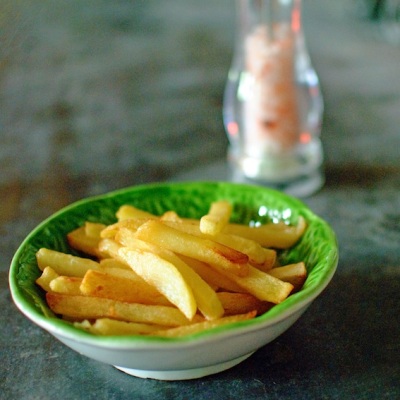
As the idea of me in charge of a vat of boiling duck fat is too harrowing to contemplate, my husband makes the chips in our house. I’m happy to report that my competence does however run to eating them. My husband is away for a few days this week and, last night, Hugo pussyfooted (sorry Hugo – I know that’s not very flattering) upstairs to Léo’s room to dispense a big slobbery goodnight kiss. He has never done this before and probably won’t do it again as, having woken Léo up, he got very short shrift (there was a burst of shouting and Hugo reappeared downstairs looking decidedly dejected, his tail between his legs). I realised that he obviously considers himself to be a stand-in papa, so now I’m wondering if he could bring the wood in for the hot-water boiler, take out the dustbins and then make me a big bowl of chips…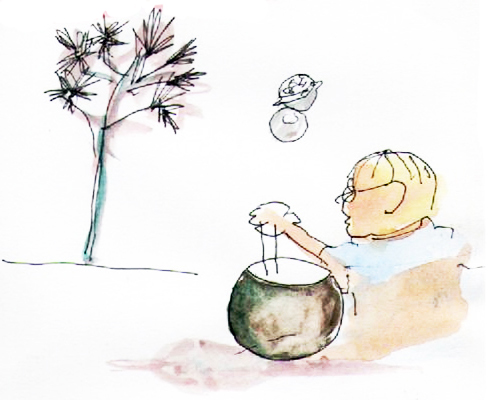
Chips, or French fries, cooked in duck fat are a speciality of Southwestern France. Duck fat is high in monounsaturated fats, which make up 50 percent of its total fat content, with saturated fat making up just 14 percent (much less than butter). Most of that fat is linoleic acid, an essential fatty acid that helps maintain healthy cells, muscles and nervous system. It also boosts calcium absorption and aids in kidney function. From a nutritional point of view, duck fat is comparable to olive oil.
Ingredients (serves 6)
2 kg floury potatoes
2 litres duck or goose fat
Sea salt
Peel the potatoes and cut into medium-sized chips (roughly 6cm long, 4mm thick). Rince and dry in a clean tea towel. Place the fat in a deep frying or chip pan and heat to 150°C. Plunge half of the potatoes into the hot fat for four minutes, remove, drain and set aside. Repeat with the second half. Then recook the first batch for a further four minutes until golden brown. Remove, drain well, season and serve. Repeat with the second half. -
Cheese soufflé and tyrannical toasters
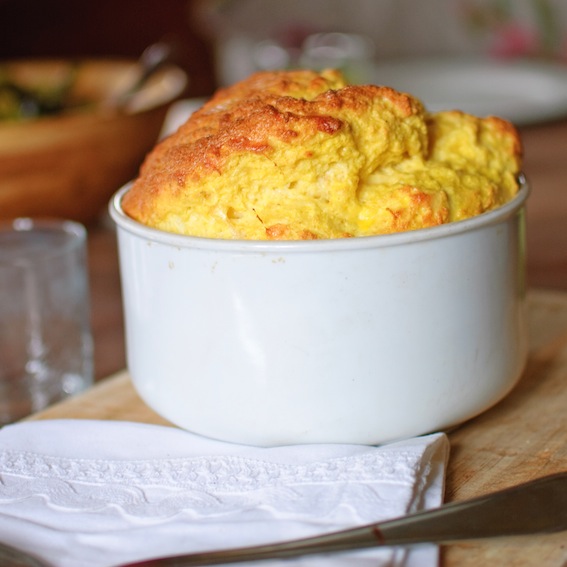
We seem to have inadvertently acquired a toaster with attitude. Big Attitude. To the extent that everyone, including Hugo, is in awe. It’s a mini dictator sitting in the middle of the kitchen snarling at anybody that dares approach. Worst of all though is its incontinence: It spurts and ejects things at random over the floor and countertop, even into the sink. On a bad day, you could be forgiven for imagining that it’s aiming straight at you. And from one day to the next, you don’t know if you’re going to be eating charcoal or still-frozen bread. I make sure to unplug it at night and, if it’s been particularly temperamental, lock the kitchen door because you just can’t be too careful.
I had never made soufflé before and had always imagined it would be a bit hit-and-miss, especially miss. Believe me though, soufflé has nothing on the toaster. In fact, it’s quick and easy to make as long as you stick to three main criteria: make sure the egg whites are properly whisked, use really good quality hard cheese — I used a combination of Parmesan and Comté — and choose timely, obedient guests (I was less successful in this respect and there was much shrill yelling). Soufflés do not take well to waiting around and collapse into an unattractive heap if not consumed immediately, a bit like the cook really.
This is based on a Delia Smith recipe.
Ingredients (serves 4)
3 large eggs, separated
75g grated hard cheese (I used a mixture of Parmesan and Comté)
150ml milk
25g butter
25g spelt flour (ordinary flour would be fine)
½ teaspoon paprika
½ teaspoon nutmeg
½ teaspoon mustard
sea salt and freshly ground black pepper
Preheat the oven to 190°C. Grease and prepare an 850ml soufflé dish. Place the milk, butter and flour in a saucepan over a medium heat and whisk until blended and thickened. Continue to cook over a low heat, still stirring, for a further couple of minutes. Add the mustard and seasoning and then leave the sauce to cool a little before stirring in the grated cheese. Beat the egg yolks and add them to the mixture. Next whisk the egg whites until stiff, then fold gently into the cheese sauce mixture, taking care to keep the structure of the whisked whites intact. Transfer to the prepared soufflé dish and place in the centre of the oven. Cook for 30-35 minutes. The centre should be cooked (i.e. not liquid) without being dry.
To be served with a crisp green salad and a gracious smile. 🙂 -
French custard tart (Far Breton) and discombobulated headmasters

Yesterday afternoon, equipped with wetsuit and flippers (I won’t harp on about the weather — let’s just say that we’re in no imminent danger of drought), I sailed through white water torrents to fetch Léo. Upon arrival in front of the school, the car, possibly rebelling at being mistaken for a catamaran, spluttered and died. I had to comandeer several classmates and their mothers to help move the catamaran/car out of the way, the aim being that we would push while Léo steered to a less hazardous spot. So much for my theory; what actually happened is that he somehow managed to jump start the wretched thing, leaving us ‘pushers’ face-down in a puddle, our arms stretched out in front of us. I thought it probably best to avoid convoluted explanations with the headmaster who was looking, quite frankly, more than a little bewildered by the sight of one of his eleven-year-old pupils driving around the school car park with his squealing, hand-flapping, mud-speckled mother in wet pursuit…

This ‘Breton Far’ originated in Brittany in the 18th century, when it was served as a savoury accompaniment made with buckwheat flour. Today it has become a traditional dessert and is often filled with dried fruit such as raisins or prunes. The sweet version is usually now made with plain flour and white sugar, but I have made my own version, which is just as good, if not better and certainly far healthier. The combination of whole flours, eggs and honey makes for a low GI dessert.
If you replace sugar with honey in a recipe you should halve the quantity as honey has double the sweetening power. Because honey is metabolised differently from sugar in the body and, as such, does not cause insulin spikes, it can be enjoyed in moderation without any of the downsides of other sweeteners and all of the upsides of eating honey. You should also slightly lower the cooking temperature when cooking with honey as it ‘browns’ more quickly than sugar.
Ingredients (serves 6-8)
60g buckwheat flour
60g whole spelt flour
4 free-range eggs, beaten
65g honey
1 teaspoon vanilla extract
2 tablespoons rum (optional)
500ml organic milk
120g dried, stoned prunes
Grease a rectangular oven-proof dish (roughly 22cm) and preheat the oven to 180°C. Pour the eggs, honey, vanilla, rum and flours into a large mixing bowl and beat well for about five minutes. Add the milk and beat for a a few minutes more. Garnish the bottom of the dish with the prunes and then pour in the mixture. Bake for about 40 minutes, or until the mixture is no longer runny (or squelchy!). You may have to pierce the ‘skin’ after about 30 minutes. Best served chilled.
-
Spice bread and watching a white hen unravel
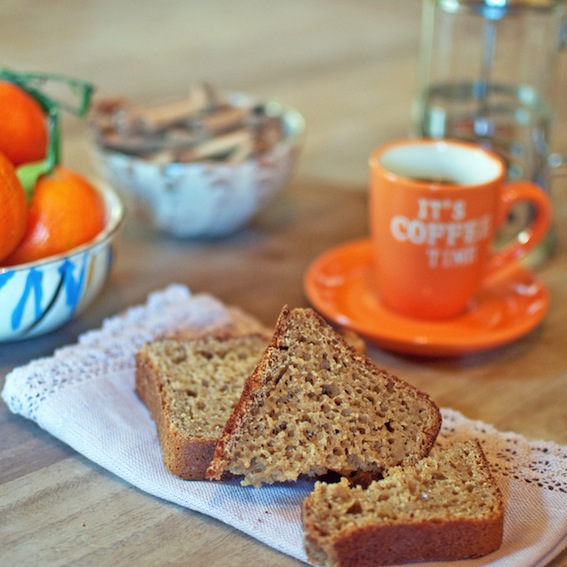
Have you ever seen a hen unravel? I hadn’t, but I have now. A friend (I use the term loosely in hindsight) gave us four hens last week. When I say hens, obviously I mean butch, feathered, street-wise ladettes hell-bent on stealing the others’ food, staying up all night and generally causing mayhen (sorry!). Our white ‘head’ hen was not amused by their arrival and ‘greeted’ them with firmly-closed wings. As soon as she caught sight of them, she strutted purposefully over to the kitchen, squawking loudly until I opened the window. When I explained that it was OK, they had been invited, she wandered off for a mad, muttering walk on her own in the woods, head between wings. Even now, a week later, she comes to check with me everyday that these ruffians are still welcome and spends more time than usual on her perch, disdainfully looking down at them.

This spice bread is deliciously soothing, which is useful when you’re trying to console a hen with a grievance.
Ingredients
500g raw honey
250g spelt flour
2 teaspoons active dry yeast
½ teaspoon cinnamon
½ teaspoon ginger
½ teaspoon nutmeg
½ teaspoon coriander
½ teaspoon cardammon seeds
Zest of 1 lemon
2 free-range eggs, beaten
100ml milk
Preheat the oven to 220°C. Dissolve the yeast in two tablespoons of lukewarm water and set aside. Gently warm the honey, spices and zest until very runny (about 3 minutes). Place the flour in a mixing bowl, leaving a well in the middle. Add the yeast and then the beaten eggs and milk to the well, followed by the honey and spice mixture. Beat until you obtain a smooth, liquid dough. Transfer to a 1kg greased loaf tin and cook for 1 hour 15 mins. Cover the tin with aluminium foil once it is golden brown. It is best to leave the bread in a tin to rest at room temperature for at least three days before eating. -
Spelt yule log (bûche de Noel) and an unidentified thigh thief

I can’t believe I’m admitting to this, but our Christmas lunch was stolen by an unidentified creature. We had put the guinea fowl, which had been slaughtered, plucked and frozen by our neighbour in November, to defrost on top of a very tall fridge in the grange. At the time, it was the proud owner of two wings and two thighs. Anyway, bad plan because when I went to get it the next morning it was minus a thigh. As we don’t have a cat, I can’t imagine what sort of animal could have climbed a slippery surface that high; it definitely wasn’t Hugo because he suffers from vertigo. My money’s on a carnivorous giraffe. Admittedly there aren’t many in Southwestern France, but it’s the only thing that makes sense. Luc, my husband, was all for cooking and serving it as an amputee delicacy, claiming that the cooking process would kill any lingering giraffe germs, but I put my foot down and we located a beautifully intact capon in a shop in the village, conveniently open on the 25th December no doubt in case of such incidents.
This ‘bûche de Noel’, which is similar to a roulade, is the traditional French Christmas dessert. It should be kept under lock and key IN THE HOUSE until you’re ready to eat it!
For the sponge:
Ingredients
4 free-range eggs
180g cane sugar
1 teaspoon vanilla extract
160g spelt flour
1 teaspoon baking powder
Raspberry jam to fill
Preheat the oven to 200°C and prepare a Swiss roll tin by lightly greasing and lining the base and sides with a large sheet of greaseproof paper, pushing it into the corners. Beat the eggs, vanilla extract and sugar together until thick and creamy and then add the spelt flour and baking powder, incorporating well. Spoon the mixture into the tin and bake in the preheated oven for nine minutes. Once baked, remove from the oven and immediately roll into a spiral on a floured-surface. Unroll and spread generously with raspberry jam. Roll again and set aside.
For the butterceam icing:
Ingredients
125g butter, softened
60g cane sugar
2 egg yolks
2 teaspoons of coffee powder, diluted in two teaspoons of water
Pour the sugar into a saucepan, lightly moisten with a few drops of water and cook for about six minutes, stirring constantly. Stop just before the mixture caramelises. Beat the egg yolks and add the hot sugar little by little until the mixture whitens. Beat the butter well and gradually add the egg yolk/sugar mixture. Finally, add the coffee, incorporating well. Cover the rolled cake with the buttercream, spreading with a spatula, decorate with walnuts and glazed cherries and leave to cool for at least an hour in the fridge before serving. -
Petits pots au chocolat (chocolate pots), abject terror and an egg dearth

Hugo’s in a bit of a bad place at the moment. He frequently wakes to the resonance of hunting rifles (beyond unsettling for a dog of his delicate mental constitution) and will only deign to go outside if accompanied. On Sunday morning, no doubt in his eternal quest for reassurance, I found him in bed with Léo. Needless to say, he had not been greeted with open arms.
Since the hens, although of sound mind, are enjoying a long sabbatical, I had to concoct an egg-free chocolate mousse solution. This is it:
Ingredients (makes 6 small pots)
150g organic dark chocolate (min 70% cocoa solids)
200ml coconut cream, chilled
20g salted butter
1 teaspoon rum (optional)
2 tablespoons agave syrup
5g agar agar
Whip the coconut cream well until it becomes fluffy. Break the chocolate into small pieces and melt it and the butter in a bain marie with the rum and agave syrup. Meanwhile, dissolve the agar agar in a small quantity of hot water (4 tablespoons), bring to the boil and simmer for a few minutes. Combine the whipped cream and chocolate mixture thoroughly. Then add the agar agar, mixing well. Transfer to small pots (or cups) and chill in the fridge for at least three hours before eating. -
Pot-au-feu (French beef stew) and disruptive mothers

Tennis tournament season is back and, once again, I’m in the market for a gag. If I don’t find one (and let’s face it, there seems to be a dearth of reasonably stylish ones), I’ll have to stop accompanying Léo to matches until I learn to control my gratuitous and unhelpful comment reflex, which never fails to kick in. I can only be thankful that the majority of the other spectators don’t understand English; I won’t go into details as I wouldn’t want to sully reputations, particularly mine. The strange thing is that neither Léo nor I are particularly competitive, but there’s something about people either criticising or applauding (I don’t know which is worse) my son’s ‘faults’ that brings out the devil in me.
This is a simple version of ‘pot-au-feu’, a traditional French dish which, strictly speaking, should include several different cuts of meat as well as oxtail. In any case, it is very comforting after a day spent in the cold having your nerves ripped to shreds! It used to be that the pot containing the stew would stay cooking over the fire nearly all winter, with bits and pieces being constantly replaced. Usually the ‘bouillon’ or sauce is eaten as soup and the vegetables and meat as a main course with mustard and pickles, although I like to eat the two together.
Ingredients (serves 4)
1 tablespoon olive oil
2 onions, sliced
2 cloves of garlic, chopped
Vegetable stock (roughly 500ml)
1kg stewing beef, cut into large cubes
4 leeks, washed and sliced
1 red pepper (optional), cut into slices
1 stick of celery, cut into four pieces
6 small carrots, cut into 3cm pieces
2 swedes or turnips, peeled and quartered
¼ white cabbage, sliced
4 small potatoes, peeled
Bouquet garni (parsely, thyme, bay)
Sea salt and freshly ground black pepper
1 teaspoon piment d’espelette (or paprika)
Preheat the oven to 150°C. In a fairly large casserole dish (Dutch oven) brown the onions and garlic very briefly in the olive oil. Add the beef and continue to brown for a couple of minutes. Add all the vegetables (except the potatoes) and then enough vegetable stock to cover. Add the seasoning, herbs and spices and bring to a gentle boil. Transfer to the oven and cook for about three hours, checking from time-to-time that there is sufficient liquid (the vegetables should be covered). Add the potatoes and cook for a further hour.
